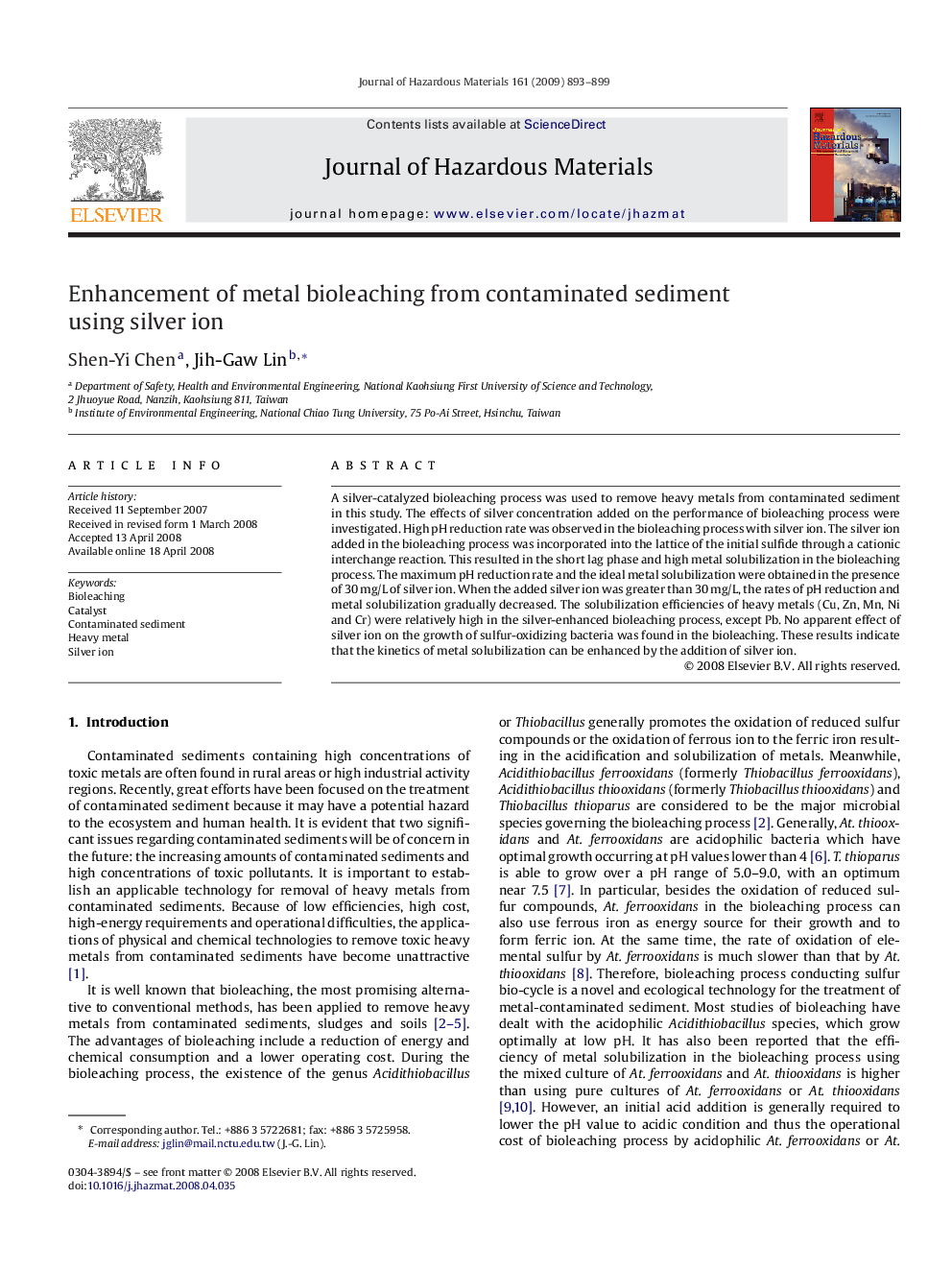| Article ID | Journal | Published Year | Pages | File Type |
|---|---|---|---|---|
| 582650 | Journal of Hazardous Materials | 2009 | 7 Pages |
Abstract
A silver-catalyzed bioleaching process was used to remove heavy metals from contaminated sediment in this study. The effects of silver concentration added on the performance of bioleaching process were investigated. High pH reduction rate was observed in the bioleaching process with silver ion. The silver ion added in the bioleaching process was incorporated into the lattice of the initial sulfide through a cationic interchange reaction. This resulted in the short lag phase and high metal solubilization in the bioleaching process. The maximum pH reduction rate and the ideal metal solubilization were obtained in the presence of 30Â mg/L of silver ion. When the added silver ion was greater than 30Â mg/L, the rates of pH reduction and metal solubilization gradually decreased. The solubilization efficiencies of heavy metals (Cu, Zn, Mn, Ni and Cr) were relatively high in the silver-enhanced bioleaching process, except Pb. No apparent effect of silver ion on the growth of sulfur-oxidizing bacteria was found in the bioleaching. These results indicate that the kinetics of metal solubilization can be enhanced by the addition of silver ion.
Related Topics
Physical Sciences and Engineering
Chemical Engineering
Chemical Health and Safety
Authors
Shen-Yi Chen, Jih-Gaw Lin,
